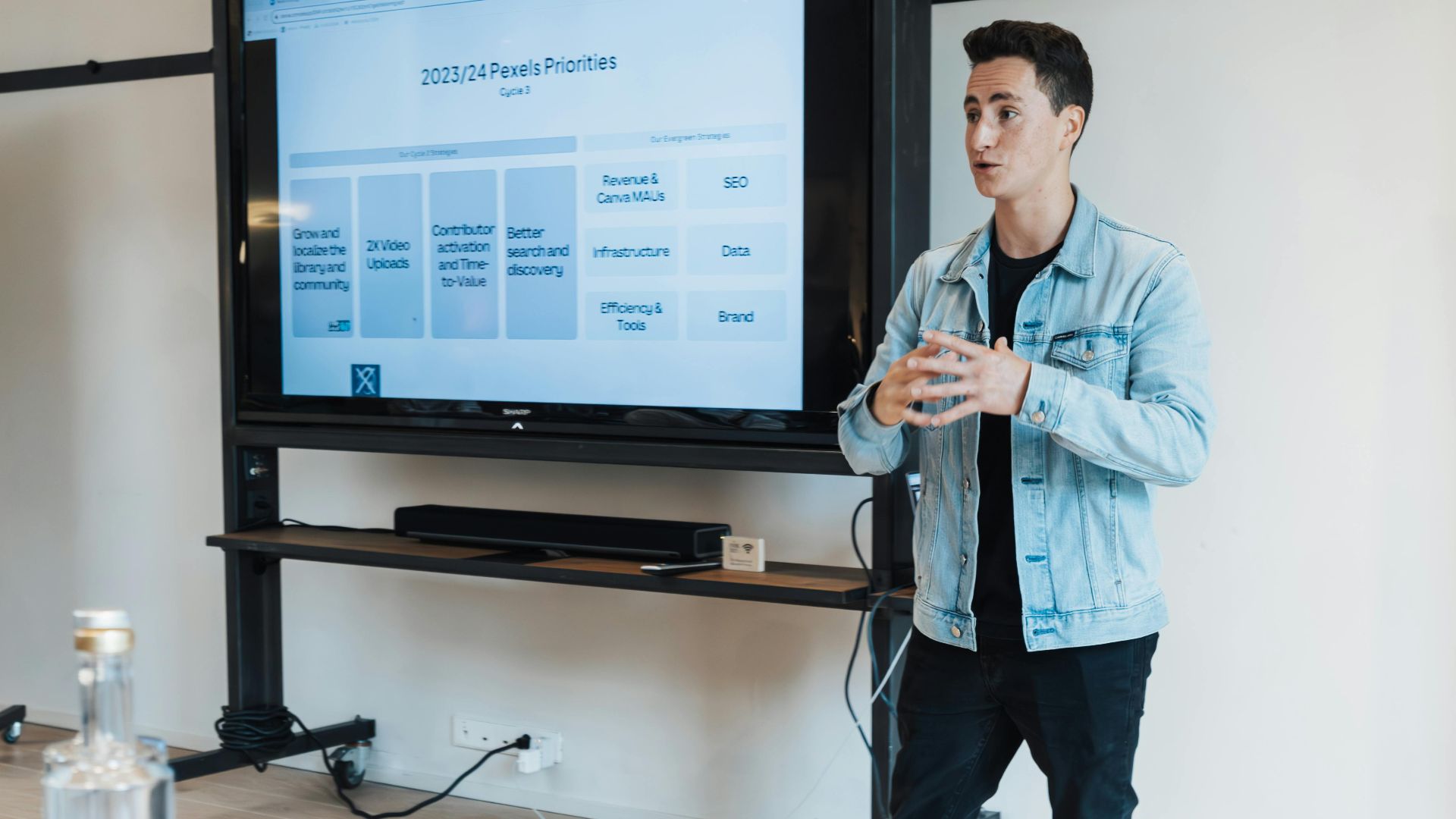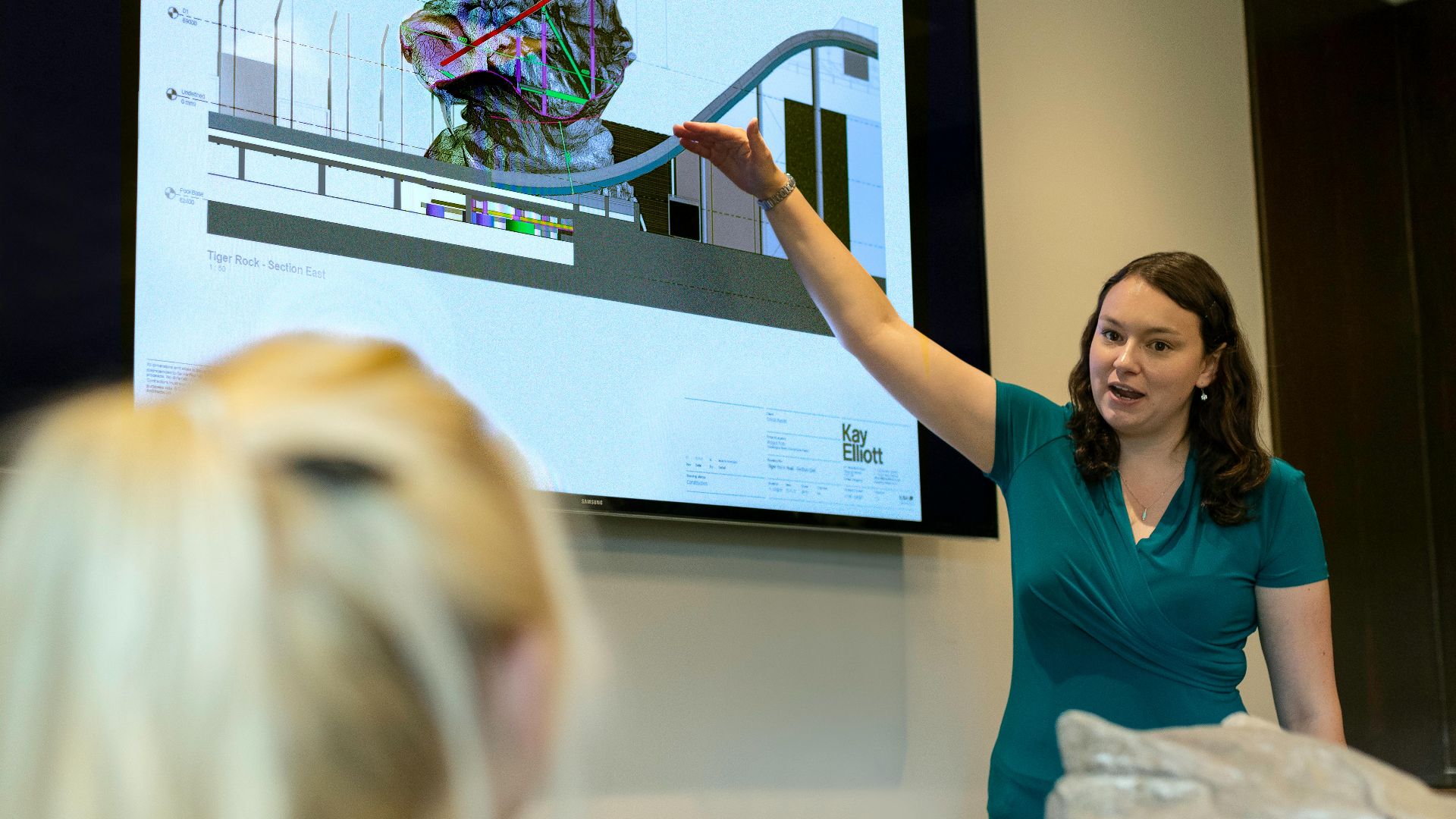Public Speaking 101
Have you ever felt like your brilliant ideas get lost somewhere between your brain and your mouth during a presentation? You're not alone. Turning that nervous energy into genuine charisma isn't generally a skill you're born with—but you can learn it. Between building confidence and ensuring the message truly lands, mastering a few key techniques makes all the difference. This list of 20 effective tips will help you charm any audience and have your ideas remembered long after the presentation ends.
1. Start With A Strong Opening
Your first impression really does set the tone for success, so make it count. A compelling hook grabs immediate attention and establishes your authority. Plus, a memorable start increases what the audience recalls and further prevents them from tuning out early.
2. Know Your Audience
A customized presentation shows you did your homework and keeps the audience hooked. To really connect with people, you have to shape the content to fit their needs. Thinking about who they are helps you guess their questions and adjust the style.
3. Practice Consistently
Never skip out on rehearsing the presentation, as it's the best way to calm your nerves and feel more confident. Practice also supports perfecting the timing and pacing, strengthening the delivery. Thorough preparation through repetition is simply the best way to minimize potential mistakes.
4. Use Storytelling Techniques
A good story makes even the most complicated ideas feel personal and easy to understand. Weaving in a narrative helps you create an emotional bond with the room. Such an approach keeps listeners engaged from start to finish.
5. Master Your Body Language
It's not just what you say, but how you show it through your nonverbal cues. Looking people in the eye builds a sense of trust, whereas good posture conveys confidence. Use hand gestures to add weight to your words.
6. Structure Your Content Clearly
An organized structure makes it so much easier for people to follow along and remember what you said. When you break the presentation into logical parts, your audience knows what's coming and won't get lost.
7. Control Your Voice
The way you speak is as important as the words you choose. A steady voice sounds authoritative, while changing the tone keeps things interesting and adds emotion. Make sure you're loud enough for everyone to hear you clearly.
8. Engage With Questions
If you ask questions, it will invite participation and keep the audience attentive. This back-and-forth turns a lecture into a real dialogue and makes sure everyone is on the same page. It's a simple trick for building a solid connection.
9. Manage Nervous Energy
Feeling a little bit nervous is completely normal, but learning to channel that energy is what separates good speakers from great ones. Being well-prepared and thinking positively can make a huge difference. Try simple tricks like deep breathing or picturing your success to calm down.
10. Let Visuals Speak
Well-chosen visuals reinforce your ideas and help explain difficult concepts. Use smart visuals—like clear charts, simple diagrams, or relevant images—that support your message instead of distracting from it. Purposeful visuals also keep the audience engaged
11. Adapt To The Room
A real pro knows how to adjust their style to fit the space they're in. That might mean speaking louder to fill a large hall or moving differently based on the room's layout. Also, pay attention to the lighting to give your best performance.
12. Incorporate Real-Life Examples
Help the ideas click by sharing real-world examples and personal stories. This practical touch makes complicated topics feel more grounded and helps the audience relate to you. Plus, using actual case studies is a fantastic way to prove the points and make learning easier.
13. Highlight Key Takeaways
Make sure the listeners leave knowing exactly what you wanted them to learn by spelling out the main takeaways. Summing up your most important points helps lock them into memory. Such clarity gives the audience something solid to hold onto and encourages them to act on it.
14. Use Humor Appropriately
Appropriate humor is a great way to build a friendly vibe with your audience. A good joke can help everyone relax, grab their attention, and make the content more fun. Just be sure your humor lands well, because a bad joke can quickly backfire.
15. Handle Questions Confidently
The Q&A part of the presentation is a chance to really prove you know your material, so take on questions with confidence. Genuinely listening to a question shows respect, and taking a moment to answer calmly clears up any confusion.
16. Dress For Impact
What you wear can grab the audience's attention before you say a single word. The right outfit not only makes you feel more confident but also shows you respect the event and the people there. Looking polished and professional is an easy way to boost your credibility.
17. Use Pauses Strategically
Don't be scared of silence; taking a strategic pause can be one of your best tools. It gives the audience a moment to think about what you just said and builds a little suspense. Using pauses also helps you avoid saying "um" and "uh," which makes your key points hit harder.
18. Vary Your Pace
You can direct the audience's attention just by changing how fast you talk. Slow down when you want to make an important point sink in, and speed up a little when you want to share your excitement. This simple trick keeps your delivery from sounding flat and boring.
19. Close With Impact
How you finish is how you'll be remembered, so make sure to close with real impact. A strong conclusion drives your main message home and can inspire action. An impactful, memorable ending shapes the audience's overall perception and significantly boosts their recall.
20. Seek Constructive Feedback
Being receptive to feedback is essential for progress. Fresh perspectives help identify both achievements and shortcomings you might not notice. When you actively seek honest evaluations, you become more aware, refine your decisions, and move toward personal and professional growth at a quicker pace.




























